You are using an out of date browser. It may not display this or other websites correctly.
You should upgrade or use an alternative browser.
You should upgrade or use an alternative browser.
relief
-
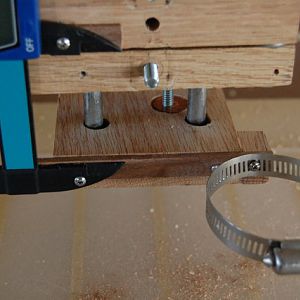
PIC 42 - Step 11c
I had to add a span so there was space between the Foredom Handpiece and the clamp SEE Followup Comments on Step 5. Pre-drill the holes on the clamp and the wood.- MT native
- Media item
- carving drill foredom homemade jig press relief
- Comments: 0
- Album: Homemade Relief Carving Jig
-
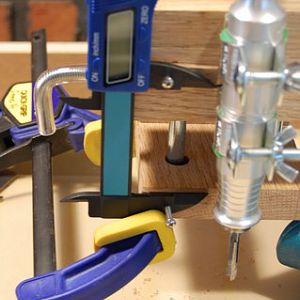
PIC 41 - Step 10b&c
Pre-drill holes in the wood with a 1/16in bit to prevent splitting. The clamp helps to hold the Gauge parallel for pre-drilling the wood. Use #6 x 1/2in screws to attach the gauge to the jig.- MT native
- Media item
- carving drill foredom homemade jig press relief
- Comments: 0
- Album: Homemade Relief Carving Jig
-
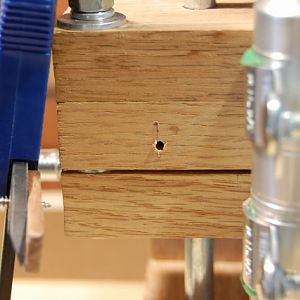
PIC 40 - Step 10a
The backs of the Gauge are not even so a spacer was added behind the end piece so it would be flush with the front of the jig.- MT native
- Media item
- carving drill foredom homemade jig press relief
- Comments: 0
- Album: Homemade Relief Carving Jig
-

WIP - Homemade Foredom Relief Carving Jig
INTRODUCTION I carve in-the-round. Now I want to do relief carving, with power tools. All of my web-based research repeatedly mentions the use of a router to ‘hog out’ the background wood in relief carvings. I do not own a router. I do not own a Dremel nor its plunge router base. The Foredom...- MT native
- Thread
- carving foredom homemade jig relief wip
- Replies: 31
- Forum: Woodcarving
-
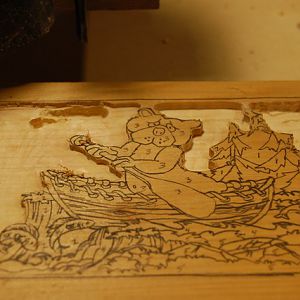
PIC 39 - Step 9
Run Test - IT WORKS!! I never doubted it would (haha) - NEXT STEP add a depth gauge and hose adaptor to dust collector- MT native
- Media item
- carving drill foredom homemade jig press relief
- Comments: 0
- Album: Homemade Relief Carving Jig
-
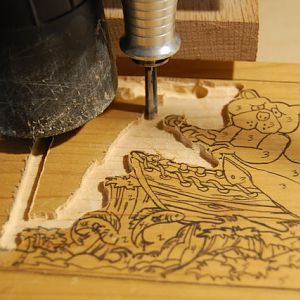
PIC 38 - Step 9
Run Test - I tried various depth cuts (back-left corner) before routing out an area at one depth- MT native
- Media item
- carving drill foredom homemade jig press relief
- Comments: 0
- Album: Homemade Relief Carving Jig
-
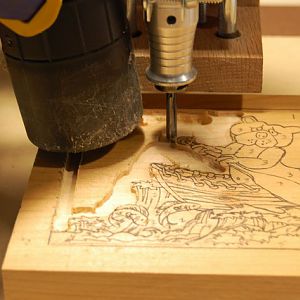
PIC 37 - Step 9
Run Test - I have no idea how deep the bit is but the wet-vac is working great- MT native
- Media item
- carving drill foredom homemade jig press relief
- Comments: 0
- Album: Homemade Relief Carving Jig
-
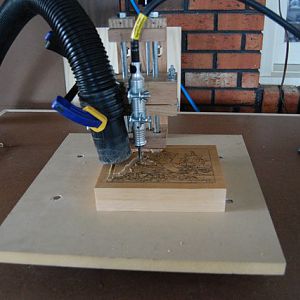
PIC 36 - Step 9
Run Test - It's ALIVE!! Dr. Frankenstein- MT native
- Media item
- carving drill foredom homemade jig press relief
- Comments: 0
- Album: Homemade Relief Carving Jig
-
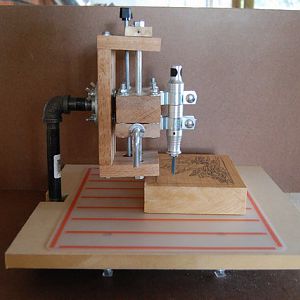
PIC 35 - Step 9
Side View - Homemade Foredom Relief Carving Jig- MT native
- Media item
- carving drill foredom homemade jig press relief
- Comments: 0
- Album: Homemade Relief Carving Jig
-
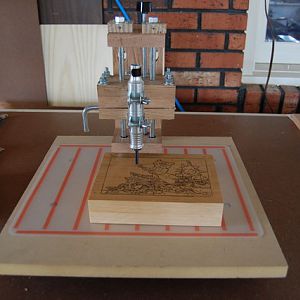
PIC 34 - Step 9
Front View - Homemade Foredom Relief Carving Jig. Depth Gauge and Dust Collector Hose still to be added.- MT native
- Media item
- carving drill foredom homemade jig press relief
- Comments: 0
- Album: Homemade Relief Carving Jig
-
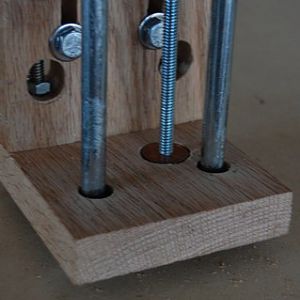
PIC 33 - Step 8
Jig Assembly - penny on bottom of Z-axis Support acts as a stop for the Depth Adjustment Rod- MT native
- Media item
- carving drill foredom homemade jig press relief
- Comments: 0
- Album: Homemade Relief Carving Jig
-
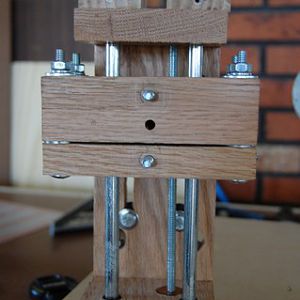
PIC 32 - Step 8
Jig Assembly - one 'Guide' bolt cut to size and channels cut in back of Z-axis Support so height above table can be adjusted.- MT native
- Media item
- carving drill foredom homemade jig press relief
- Comments: 0
- Album: Homemade Relief Carving Jig
-
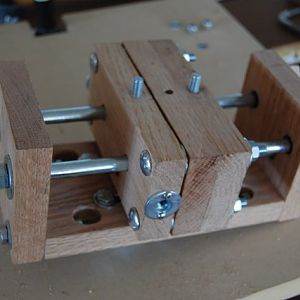
PIC 31 - Step 8
Assemble the Jig- MT native
- Media item
- carving drill foredom homemade jig press relief
- Comments: 0
- Album: Homemade Relief Carving Jig
-
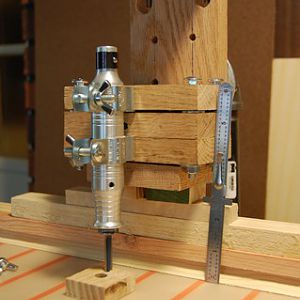
PIC 30 - Step 7b
Figuring out how much height adjustment I can get (using scrap wood spacers) before cutting channels in the ‘spine’- MT native
- Media item
- carving drill foredom homemade jig press relief
- Comments: 0
- Album: Homemade Relief Carving Jig
-
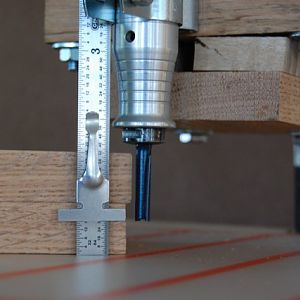
PIC 29 - Step 7b
If Z-axis Support were raised 1/2in then a max 1.5in block could be hogged-out to depth to 1/2in from bottom- MT native
- Media item
- carving drill foredom homemade jig press relief
- Comments: 0
- Album: Homemade Relief Carving Jig
-
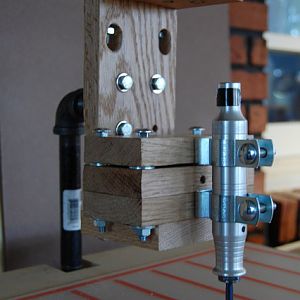
PIC 28 - Step 7a
Dry Fit to Frame to determine height above the table – Bit touches table NOT GOOD- MT native
- Media item
- carving drill foredom homemade jig press relief
- Comments: 0
- Album: Homemade Relief Carving Jig
-
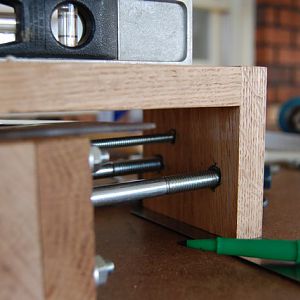
PIC 27 - Step 6d
Mark where the holes will be drilled. Repeat leveling, centering and marking for other end- MT native
- Media item
- carving drill foredom homemade jig press relief
- Comments: 0
- Album: Homemade Relief Carving Jig
-
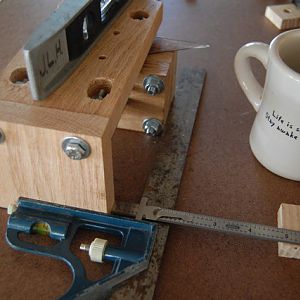
PIC 26 - Step 6c
Make sure the Carriage is centered and square to the Z-axis Support. COFFEE HELPS ME THINK- MT native
- Media item
- carving drill foredom homemade jig press relief
- Comments: 0
- Album: Homemade Relief Carving Jig
-
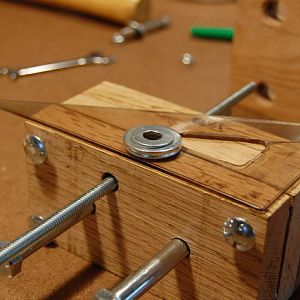
PIC 25 - Step 6b
Add spacers to simulate the travel clearance you will have between the bolt heads in the Carriage and the ‘spine’ of the Z-axis Support- MT native
- Media item
- carving drill foredom homemade jig press relief
- Comments: 0
- Album: Homemade Relief Carving Jig
-
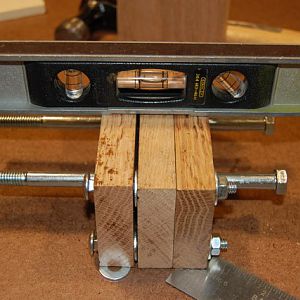
PIC 24 - Step 6a
Level the Carriage FRONT SIDE DOWN- MT native
- Media item
- carving drill foredom homemade jig press relief
- Comments: 0
- Album: Homemade Relief Carving Jig
